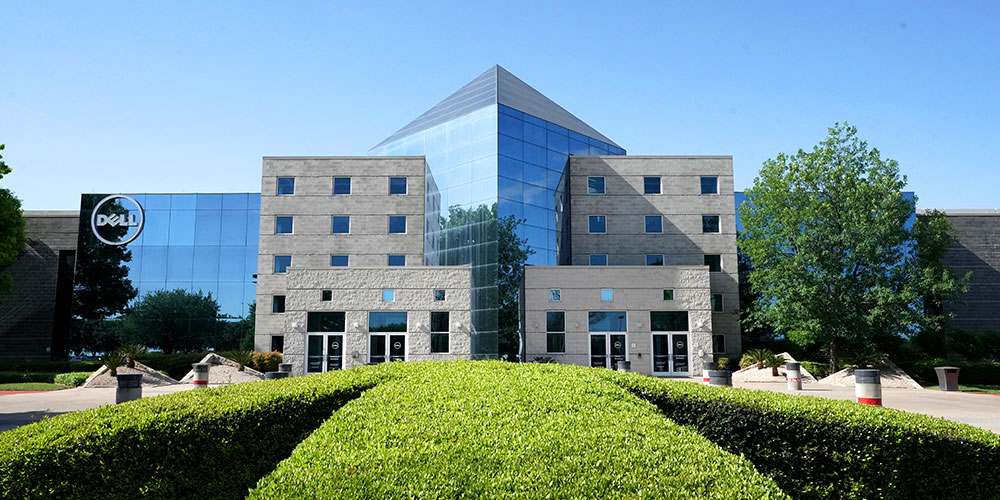Dell remodels offices around the world to improve comfort, flexibility, and collaboration.

Among today’s top tech strategists it has become something of a mantra. It’s been written about in publications such as Forbes , CNN Money and Fast Company, and pronounced by CEOs around the world: Work is no longer a destination, but an activity.
With nearly omnipresent internet, easy-to-use video conferencing, and email on our smartphones, the boundaries of the physical office have almost completely dissolved. So how does a 21st-century business, especially one with as many employees as Dell Technologies (almost 140,000 at last count) plan for the future? As Dawn Longacre, Dell’s global workplace strategist asked, “When you can work anywhere, what makes you want to come into the office?”
Work is much more collaborative today, so we need to break down the walls.
Building the Future
Dell has always been focused on ‘building innovation’ – from our first years as a direct-to-market game changer, to the mid-90s, when we constructed one of the world’s largest corporate campuses. Now, with changing workstyles and generational shifts, we’re addressing the evolution of the office space by remodeling our buildings into state-of-the-art environments.
“People come to the office for specific purposes – to collaborate; to be more productive; to garner inspiration and innovation from their teammates,” Longacre said. “That’s why we’re creating spaces where people want to work.”
Breaking Down Walls
“The cubicle was created in the 1960s, and it provides a functional purpose. But work has changed drastically. The management styles and tools we use have evolved,” she said. “Work is much more collaborative today, so we need to break down the walls.”
Even if workers commute to a central office, their work is rarely stationary. “Today’s employees aren’t tethered to the desk. So we want them to feel comfortable to collaborate anywhere in the building,” said Terry Burr, senior program manager.
Part of that solution is to create common areas that people actually want to use. So Dell’s workplace strategists came up with a smart, straightforward solution (If you’ve ever been to a party where everyone gathers in the kitchen, then you’ll get it).
When you can work anywhere, what makes you want to come into the office?
Talking Around the Table
In addition to reimagining conference rooms and personal work areas (more on this soon), Dell has begun a major overhaul of its cafeteria spaces. “We have created many more meeting spaces in the cafeteria,” said Burr. “There are new varieties of seating options and furniture – communal seating like benches and off to the side, a two-seater booth for private conversations. I see people in there now, exchanging ideas, at all times of the day. Not just at lunchtime.”
Every building’s cafeteria space will be optimized for comfort and collaboration. “You’ll find taller coffee bar tables, picnic tables, lounge seating – plus power outlets for your tech so you can work as long as you want,” adds Longacre. “The goal is to create environments that are inviting with soothing color palates, warm wood and interesting stone textures. It’s more like a coffee shop or restaurant, where you’d hang out for a while and talk.”
The renovation doesn’t end at the door. Dell has also expanded and improved the exterior terraces. “Just outside, our employees will find new chaise lounges and patio seating, as well as access to Wi-Fi so you can work outdoors and soak up a little vitamin D,” she said.

The Journey
It’s like a neighborhood,” said Emily Dreyer, director of Global Real Estate Strategy. “When people come together, whether purposely or not, it forces them to talk. Just overhearing something can spark new conversations and ideas.”
Feedback from current employees has been overwhelmingly positive, but according to the strategists involved in the process, the renovation could bear long-term benefits for Dell.
“This is a journey. So far, people seem to appreciate the changes we’re making. But if our spaces are more collaborative, people will talk more and good things will come of that – they’ll solve problems and create new products,” said Tom Menke, vice president of Global Facilities. “That’s the goal.”
Stay tuned for future updates about transformation on Dell campuses around the world.